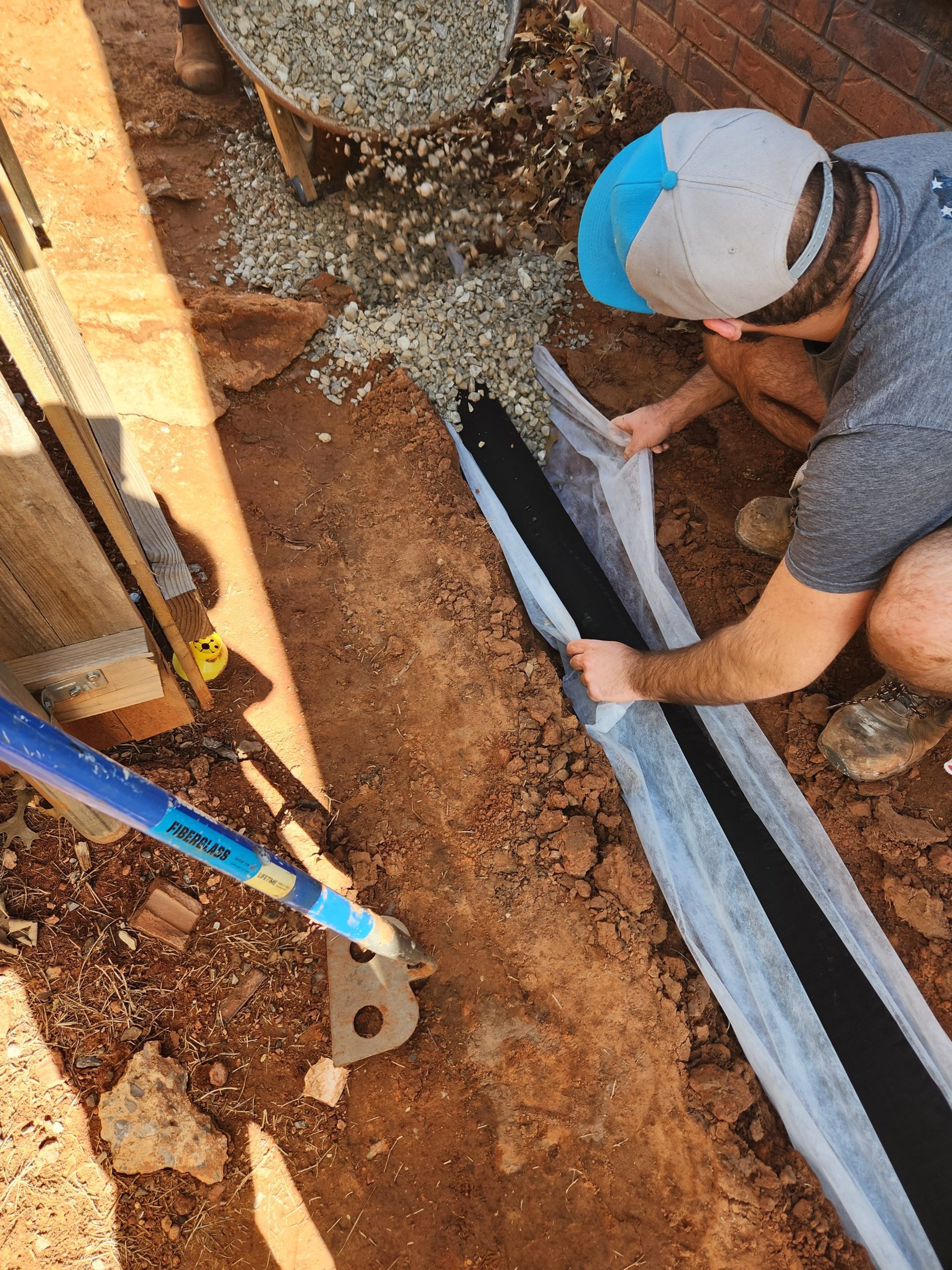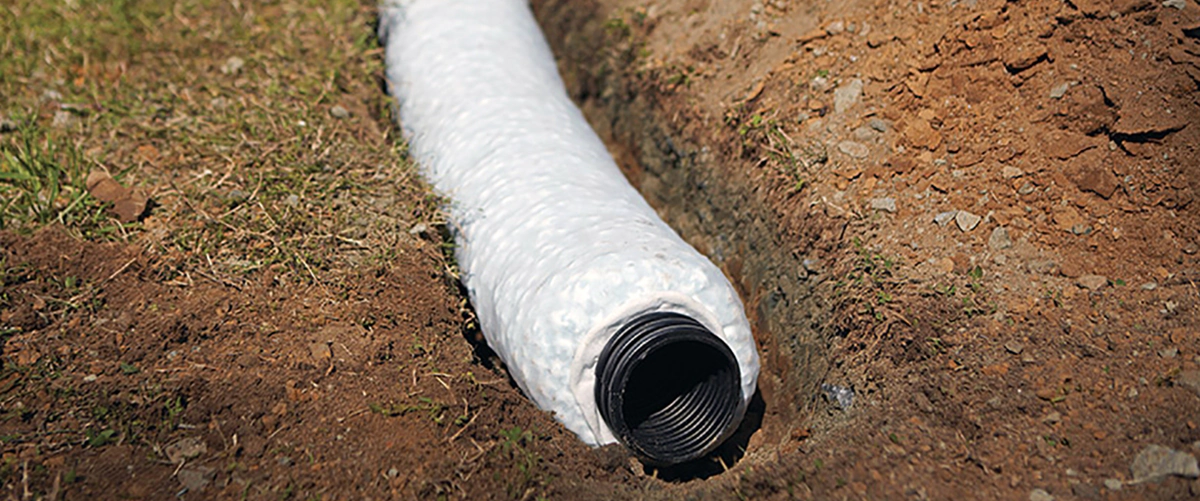The Crucial Guide to Keeping Your French Drainpipe for Durable Efficiency
Preserving your French drainpipe is vital to its performance and your property's protection. Normal checks can save you from expensive repairs and water damages. You'll would like to know what signs to try to find and exactly how often to inspect your system. Plus, comprehending the cleansing procedure can make a significant difference. Let's check out the crucial steps for guaranteeing your drainpipe works well for many years ahead.
Comprehending the Function of a French Drain
A French drain is a crucial element in managing water around your home. It guides excess water far from your foundation, protecting against flooding and damages. When hefty rainfall falls, the drain gathers water with a perforated pipeline hidden in gravel. This system allows water to flow freely, minimizing pressure on your basement walls and decreasing the risk of leaks.You could ask yourself just how it operates in practice. As water fills the dirt, gravity pulls it toward the drainpipe. The perforated pipeline catches this water, delivering it to a designated drain area or tornado sewage system. This procedure maintains your yard completely dry and secures your home's architectural integrity.Understanding exactly how a French drain functions is essential to appreciating its value. By successfully channeling water away, it aids maintain a safe and completely dry living setting. So, keeping your French drainpipe in top problem assurances you avoid expensive fixings down the line.
Regular Inspections: What to Search for
When you're inspecting your French drain, start by looking for any kind of clogs that may be blocking water flow. Pay interest to indicators of surface erosion around the drain, as this can suggest potential issues. Regular assessments will aid keep your drain system functioning efficiently.
Obstructed Drainpipe Assessment
How can you tell if your French drain is obstructed? Initially, watch for water merging in your yard, especially after hefty rainfall. If you notice areas where water gathers rather of draining, that's a red flag. You ought to also examine the drain electrical outlet; if water isn't moving out as it should, there's likely a blockage. Listen for uncommon gurgling sounds, which can suggest trapped air. Additionally, examine the drain's surface area for any plants development, as origins can penetrate and clog the system. Lastly, if you scent stuffy smells, it might indicate stagnant water triggered by a blockage. On a regular basis assessing these signs can aid you maintain your French drainpipe successfully and prevent pricey repair work.
Surface Disintegration Check

Cleansing Your French Drainpipe: Step-by-Step Overview
Cleansing your French drainpipe is important for keeping it operating appropriately. You'll need some particular tools and a clear process to assure every little thing runs smoothly. Allow's stroll via the actions and tips for maintaining your drainpipe efficiently.
Tools You'll Require
To take on the task of cleansing your French drain efficiently, you'll intend to collect a few important tools. Grab a durable pair of handwear covers to safeguard your hands from debris and sharp things. A tiny shovel or trowel will certainly assist you get rid of dust or clogs around the drainpipe. For removing the inside, a plumbing technician's snake or a high-pressure water nozzle can be exceptionally useful. You'll likewise require a bucket for collecting any type of particles you draw out. Ultimately, having a yard hose pipe accessible will make it less complicated to rinse out the drainpipe and assure it's moving efficiently. With these devices prepared, you'll be established for an extensive cleansing session!
Cleansing Process Actions
Begin by reviewing the location around your French drain for any type of noticeable particles or clogs. Remove leaves, branches, or dust that may obstruct water flow. Next, examine the inlet and outlet areas; clear any kind of obstructions to assure appropriate drainage. Use a yard tube to flush the drain, directing water into the inlet. This assists displace any accumulated sludge or debris. If you notice persistent blockages, think about making use of a plumbing technician's snake to break them up. After cleaning, evaluate the crushed rock around the drain; replenish it if it's removed. Validate the drain covers are undamaged and safely in place to prevent particles from going into. Routine cleansing maintains your French drain working efficiently.
Maintenance Regularity Tips
While routine maintenance is necessary for your French drainpipe's longevity, understanding just how often to keep it can make all the difference. Preferably, you ought to inspect your French drainpipe a minimum of twice a year, ideally in spring and fall. After heavy rainfall or snowmelt, look for obstructions or debris. If you observe any type of standing water, it's time to clean your drain.In locations with heavy vegetation, even more constant upkeep-- about every 3 months-- may be necessary. In addition, consider cleansing your French drainpipe after significant storms or if you observe water pooling in your lawn. By remaining aggressive, you'll guarantee your French drain features successfully and safeguards your home from water damage. Routine find out checks will conserve you money and time in the future.
Identifying Common Problems and Their Solutions
It's crucial to determine typical issues with your French drain and implement effective solutions when you see water merging in your lawn or damp areas in your cellar. One frequent trouble is obstructing, commonly triggered by particles like leaves or debris. To fix this, you can utilize a pipes serpent or a high-pressure water jet to clear blockages.Another problem could be improper slope. If your drain isn't sloped properly, water won't flow far from your home. You can readjust the incline by digging and rearranging the drainpipe pipe.Lastly, check for damages or splits in the drain itself. Replacing the harmed areas is essential for peak performance if you locate any type of. By addressing these problems quickly, you'll help ensure that your French drainpipe continues to work effectively, shielding your residential property from water damages and maintaining a completely dry, risk-free setting.
Seasonal Upkeep Tips for Your French Drainpipe
Dealing with typical problems with your French drain is simply the initial step in assuring its long-term effectiveness. Seasonal maintenance is important for peak performance. In the springtime, remove leaves and particles that may have gathered throughout wintertime. Look for any type of obstructions in the outlet or catch container, as water needs a clear course to flow freely.During summer, examine your drainpipe for why not look here any indicators of shifting or resolving dirt. Make particular it's still level and working effectively. As autumn approaches, clear out any kind of dropped delegates protect against blockages before winter arrives.In winter months, look for freezing temperature levels. If you stay in a chilly climate, make sure your drainpipe isn't at threat of cold. Protecting revealed pipes can assist. Regular checks and timely maintenance can prevent costly fixings and keep your French drain functioning effectively year-round. Remain positive and enjoy peace of mind recognizing your drain system remains in good condition!
When to Hire an Expert
When to call in a professional can conserve you time and protect against more damages to your French drain, understanding. It's a clear sign that your drain might be blocked or damaged if you discover relentless standing water in your lawn. Don't overlook weird odors, as they can suggest sewer back-up or decay, which needs prompt attention.If you locate that your drainpipe isn't functioning properly after attempts to tidy or maintain it, it's time to connect for specialist aid. Additionally, if you're unsure regarding the underlying problems or do not have the required devices, employing an expert can supply peace of mind.Finally, if your French drain is old or has experienced substantial damage, specialist assessment can figure out whether fixings or complete replacement is needed. Depend on the experts to assure your drainage system functions effectively for many years to find.
Tips for Stopping Future Water Drainage Troubles
To maintain your French drain working successfully, on a regular basis evaluating and keeping it can make all the distinction. Beginning by removing particles, leaves, and dust from the surface and drainpipe openings. This avoids obstructions that can navigate here bring about water backup. Check the crushed rock around the drainpipe; if it's compressed or worn down, consider adding fresh crushed rock to keep ideal flow.Next, divert water far from your drain by making sure seamless gutters and downspouts are clear and routing water a minimum of three feet far from your foundation. Consistently inspect for any signs of damage or sagging. If you observe problems, address them immediately.Finally, take into consideration mounting a filter or a catch container to trap larger particles before it gets in the drainpipe. By remaining proactive with these pointers, you'll reduce the risk of future water drainage issues and keep your French drainpipe in leading shape.
Regularly Asked Concerns
For how long Does a French Drain Usually Last?
A French drainpipe commonly lasts around 30 to 40 years, relying on the products made use of and upkeep (Portland French Drain). If you stay on top of regular checks, you can prolong its lifespan also further
Can I Install a French Drain Myself?
Yes, you can set up a French drainpipe on your own if you've obtained the right tools and understanding. Just make sure to prepare very carefully, follow neighborhood policies, and warranty appropriate drainage to avoid future concerns.
What Materials Are Made Use Of in a French Drainpipe?
You'll require perforated pipeline, gravel, landscape material, and a solid drainage pipe for your French drain. These materials help reroute water successfully, preventing flooding and keeping your residential property risk-free and dry from water damages.

Is a Permit Required to Mount a French Drainpipe?
You'll likely need a license to set up a French drain, relying on local policies. Consult your district to guarantee you follow any type of essential standards and stay clear of prospective problems during installation.
What Are the Costs Connected With French Drainpipe Maintenance?
Keeping a French drain generally sets you back in between $100 and $500 annually. You'll need to take into account costs for cleaning, repair work, and inspections. Normal upkeep assists stop larger costs and warranties your system works effectively for several years - Portland French Drain. When you're inspecting your French drain, start by examining for any clogs that might be blocking water flow. By remaining positive, you'll assure your French drain features successfully and protects your residential or commercial property from water damages. When you discover water merging in your backyard or damp areas in your basement, it's vital to recognize common problems with your French drainpipe and carry out efficient options. You can adjust the slope by digging and repositioning the drainpipe pipe.Lastly, check for damage or cracks in the drain itself. Examine the gravel around the drainpipe; if it's compacted or deteriorated, consider adding fresh gravel to maintain ideal flow.Next, divert water away from your drainpipe by making sure downspouts and rain gutters are clear and guiding water at the very least 3 feet away from your foundation